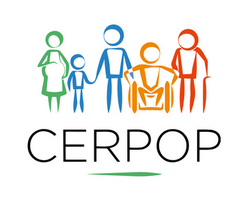Postneonatal Cerebral Palsy in Europe: Prevalence and Clinical Characteristics According to Contributory Events: An SCPE Study
Résumé
Background Postneonatal cerebral palsy (PNCP) is rare and requires large databases to be studied over time. Objectives To study the time trend of prevalence of PNCP overall and by cause, and to describe the clinical characteristics of children with PNCP according to cause and compared with children with pre/peri/neonatal CP (PPNCP). Methods The Surveillance of Cerebral Palsy in Europe (SCPE) database was used. Primary events (the first known chronological event in the causal chain) were classified according to the SCPE classification (six main and 19 sub‐categories). Prevalence trends for children born during 1976–2012 were modelled using multilevel generalised linear models. The clinical characteristics of PNCP and PPNCP cases born after 1998 were reported as proportions. Results The prevalence rates of PNCP were 1.76 (95% confidence interval (CI) 1.37, 2.23) and 0.82 per 10,000 live births (95% CI 0.73, 0.92) in children born during 1976–1980 and 2006–2012, respectively. The models showed a 2% annual decline in overall prevalence (prevalence rate multiplied by 0.98 each year) and a 10% decline for infectious causes for every 5‐year change. The prevalence rate in children born during 2006–2012 was 0.26 per 10,000 (95% CI 0.21, 0.32) for infectious causes, which remained the most frequent. No trend emerged for other causes. Unilateral spastic CP, associated impairments and severe gross motor dysfunction were more frequent in PNCP than in PPNCP, and PNCP showed predominantly grey matter injury (55.6%). Seventeen percent were born preterm. PNCP differed by cause, with cerebrovascular accidents presenting the least severe and hypoxic causes the most severe forms. Conclusion Our study confirms the decrease in the prevalence of PNCP in children born up to 2012, particularly for CP, due to infectious causes, which remain the most frequent. Children with PNCP had more severe presentation overall than those with PPNCP, with severity depending on the cause.
Domaines
Santé publique et épidémiologie
Fichier principal
 Paediatric Perinatal Epid - 2025 - Delobel‐Ayoub - Postneonatal Cerebral Palsy in Europe Prevalence and Clinical-1.pdf (1.5 Mo)
Télécharger le fichier
Paediatric Perinatal Epid - 2025 - Delobel‐Ayoub - Postneonatal Cerebral Palsy in Europe Prevalence and Clinical-1.pdf (1.5 Mo)
Télécharger le fichier
| Origine | Publication financée par une institution |
|---|
